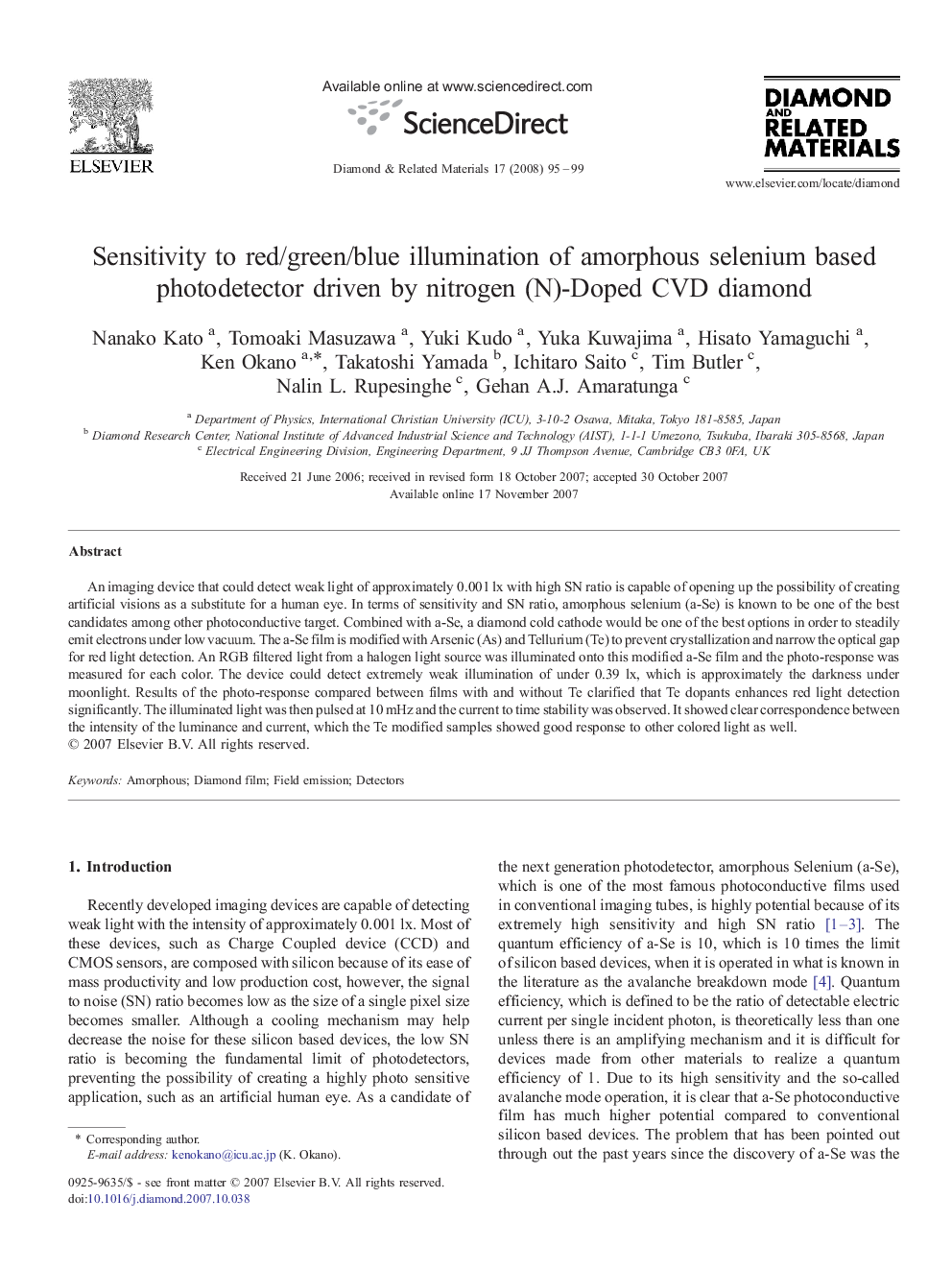| Article ID | Journal | Published Year | Pages | File Type |
|---|---|---|---|---|
| 702273 | Diamond and Related Materials | 2008 | 5 Pages |
An imaging device that could detect weak light of approximately 0.001 lx with high SN ratio is capable of opening up the possibility of creating artificial visions as a substitute for a human eye. In terms of sensitivity and SN ratio, amorphous selenium (a-Se) is known to be one of the best candidates among other photoconductive target. Combined with a-Se, a diamond cold cathode would be one of the best options in order to steadily emit electrons under low vacuum. The a-Se film is modified with Arsenic (As) and Tellurium (Te) to prevent crystallization and narrow the optical gap for red light detection. An RGB filtered light from a halogen light source was illuminated onto this modified a-Se film and the photo-response was measured for each color. The device could detect extremely weak illumination of under 0.39 lx, which is approximately the darkness under moonlight. Results of the photo-response compared between films with and without Te clarified that Te dopants enhances red light detection significantly. The illuminated light was then pulsed at 10 mHz and the current to time stability was observed. It showed clear correspondence between the intensity of the luminance and current, which the Te modified samples showed good response to other colored light as well.
